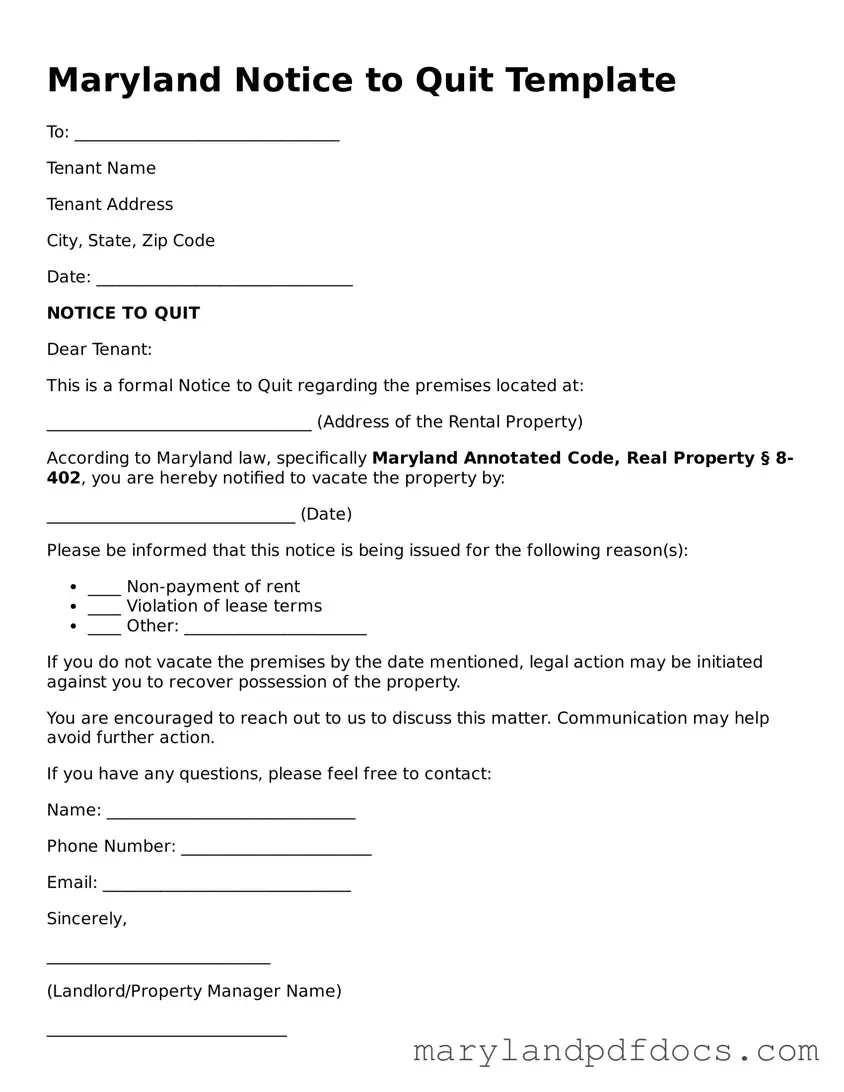Maryland Notice to Quit Template
To: ________________________________
Tenant Name
Tenant Address
City, State, Zip Code
Date: _______________________________
NOTICE TO QUIT
Dear Tenant:
This is a formal Notice to Quit regarding the premises located at:
________________________________ (Address of the Rental Property)
According to Maryland law, specifically Maryland Annotated Code, Real Property § 8-402, you are hereby notified to vacate the property by:
______________________________ (Date)
Please be informed that this notice is being issued for the following reason(s):
- ____ Non-payment of rent
- ____ Violation of lease terms
- ____ Other: ______________________
If you do not vacate the premises by the date mentioned, legal action may be initiated against you to recover possession of the property.
You are encouraged to reach out to us to discuss this matter. Communication may help avoid further action.
If you have any questions, please feel free to contact:
Name: ______________________________
Phone Number: _______________________
Email: ______________________________
Sincerely,
___________________________
(Landlord/Property Manager Name)
_____________________________
Landlord/Property Manager Address
City, State, Zip Code
